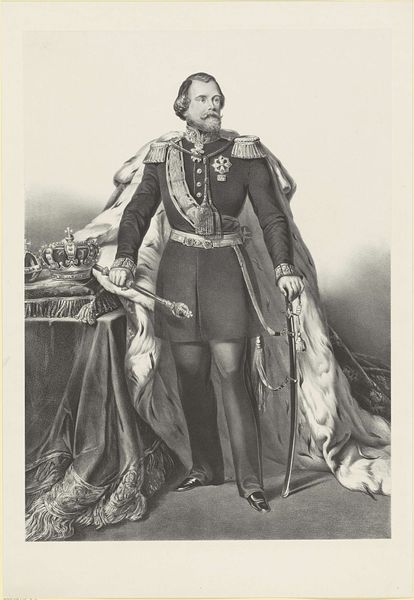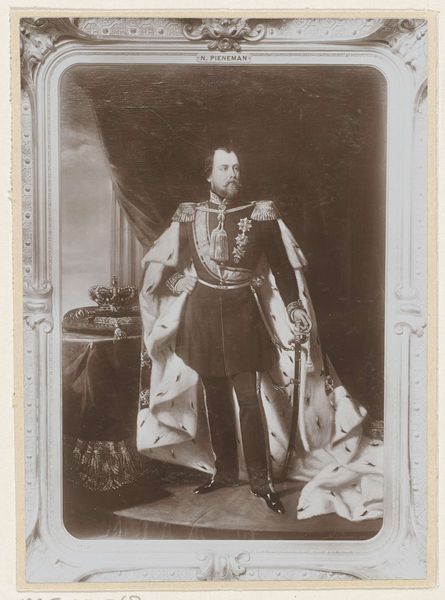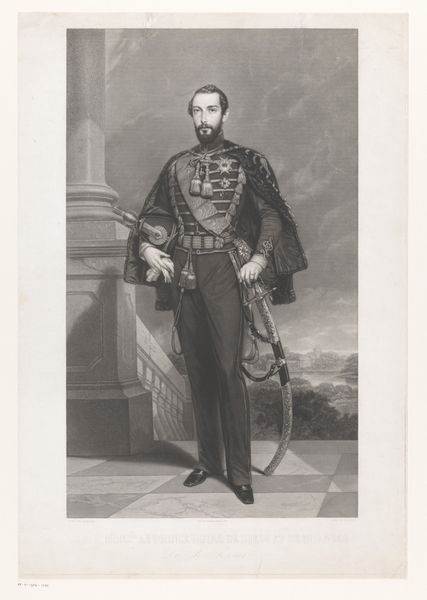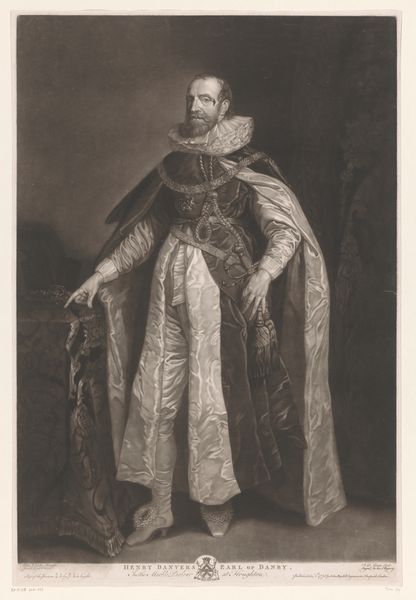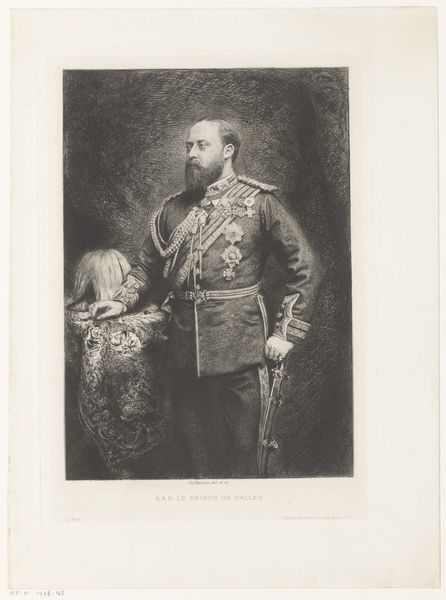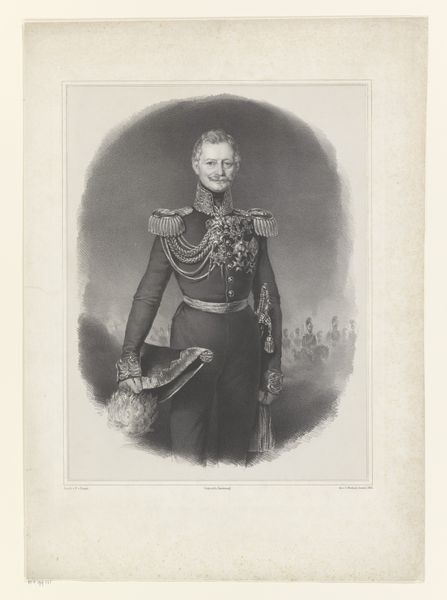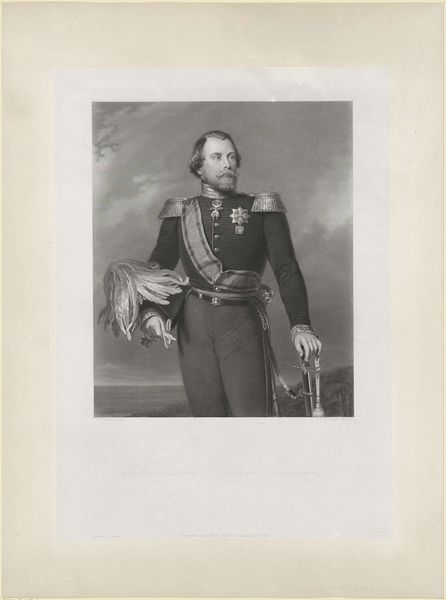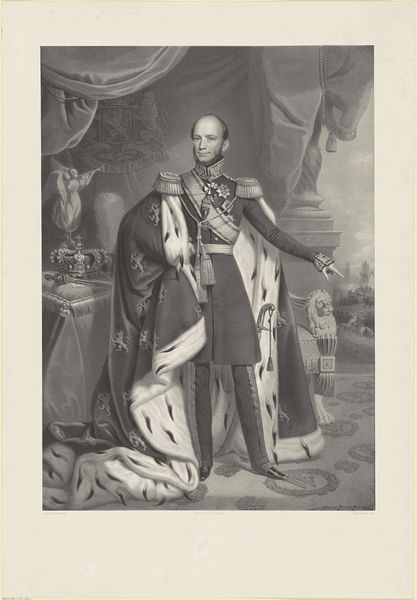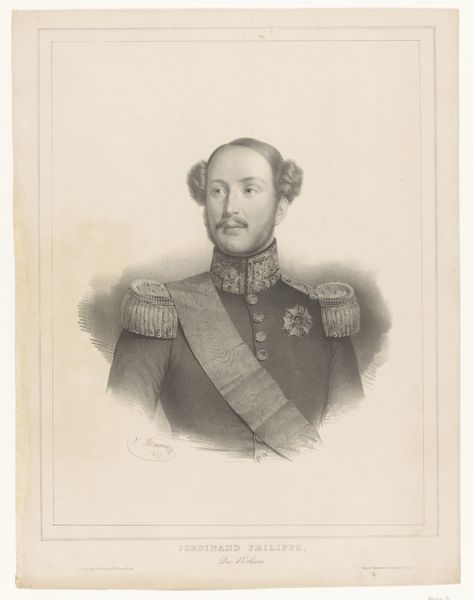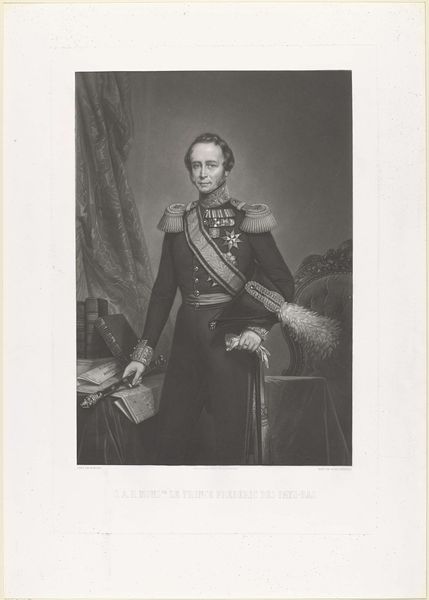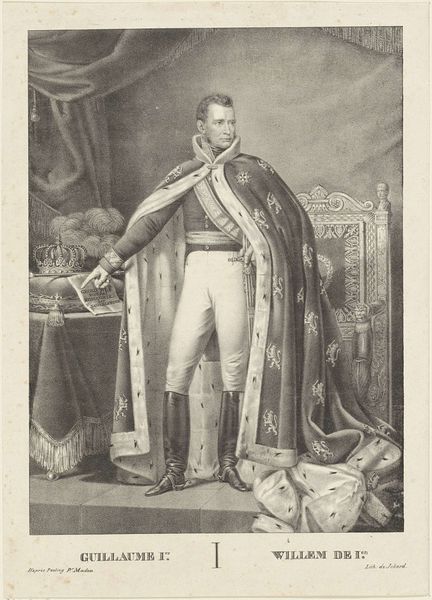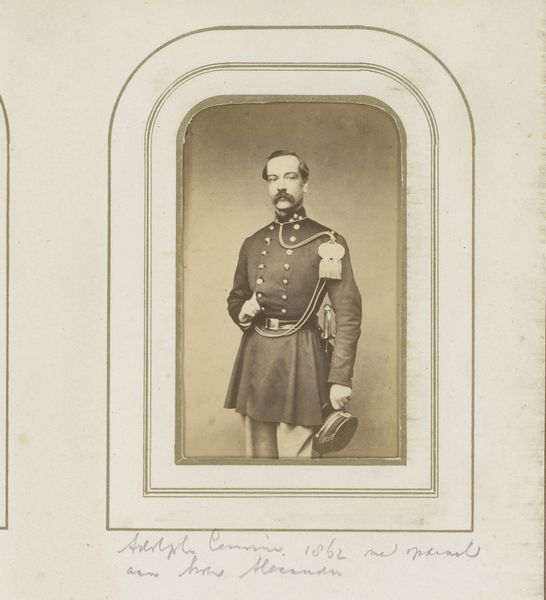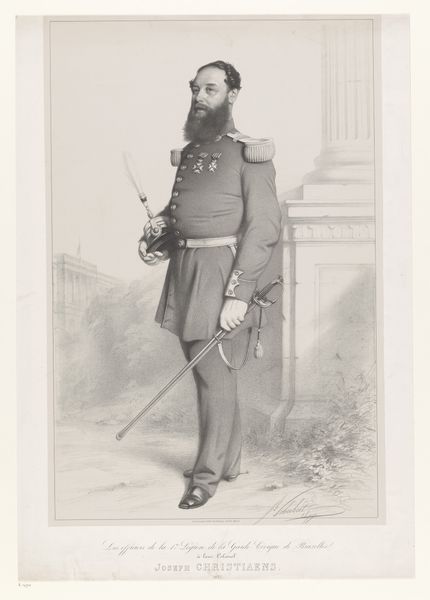
#
portrait
#
print photography
# print
#
light coloured
#
archive photography
#
historical photography
#
history-painting
#
academic-art
Dimensions: height 773 mm, width 548 mm
Copyright: Rijks Museum: Open Domain
Editor: So, this is "Portret van koning Willem III" by Johann Wilhelm Kaiser, dating from 1856 to 1898. It's a print, and looking at it, the regality feels almost… staged. What do you see in this piece beyond just a royal portrait? Curator: I see more than just a portrait; I see a carefully constructed image intended to project power and legitimacy during a time of immense social and political upheaval. Kaiser presents Willem III as a stoic, almost distant figure, adorned with symbols of authority – the crown, the ermine robe, the military regalia. But let’s consider who this image was *for*. Do you think its audience readily accepted such a portrayal, or was it meant to suppress underlying tensions? Editor: That’s a great point. I hadn’t considered the purpose behind the image, or the historical tensions of the time. I suppose projecting an image of strength and stability was paramount, regardless of how the public truly felt. Curator: Exactly. Think about the revolutions that had swept through Europe. Willem III came to power amidst growing calls for democratization. This portrait becomes a visual argument for the necessity of monarchy, attempting to quell dissent by associating the king with tradition, divine right, and military might. But also, consider the absence of any relatable human element. The stiff pose, the carefully arranged symbols—do they connect with the common person, or do they further create a distance? Editor: I see what you mean. There’s a deliberate lack of warmth, creating that distance. It makes you wonder about the effectiveness of such a strategy, whether it truly convinced or simply reinforced existing power structures. Curator: Indeed. By analyzing such portraits, we can unpack the complex relationship between art, power, and societal control. How might we reimagine this portrait today to subvert or challenge these ingrained power dynamics? Editor: That's a powerful question. I guess I had initially overlooked the depth and social commentary inherent in what appears to be a standard historical portrait. Thank you for that perspective. Curator: And thank you for opening up the discussion. Recognizing those historical power plays within seemingly conventional artworks enables us to engage in critical conversations about representation and social justice.
Comments
No comments
Be the first to comment and join the conversation on the ultimate creative platform.
